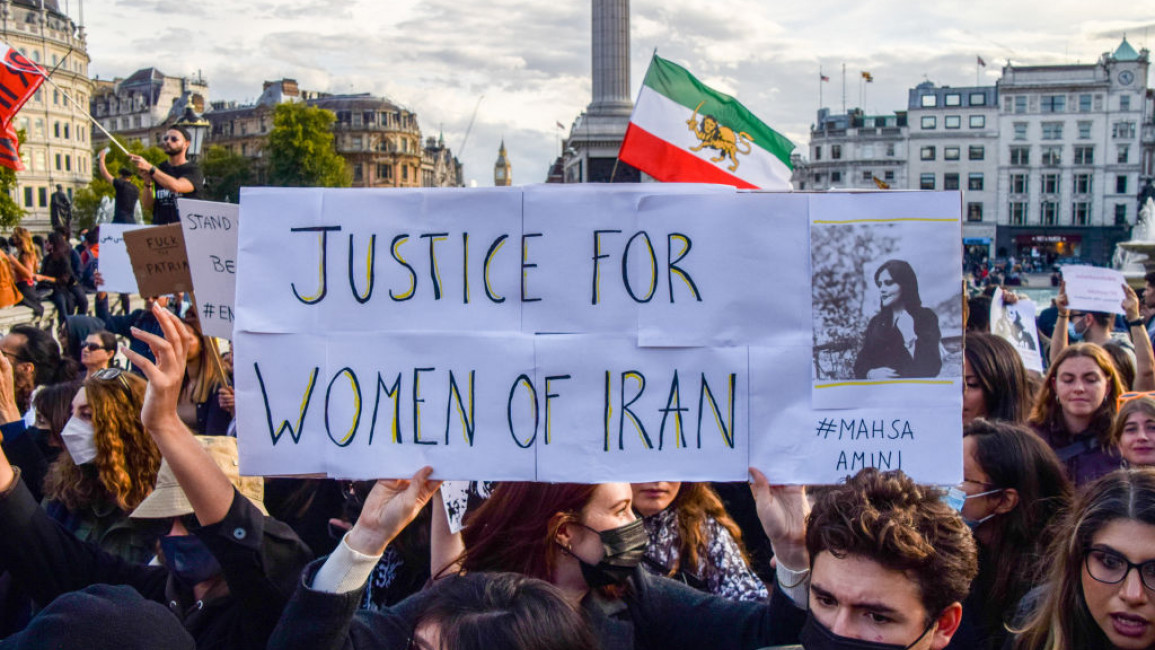
International solidarity with all Iranian women has never been more important
The death of Mahsa Amini (or Jina, which was her Kurdish name) sparked mass outrage across Iran, and the rest of the world, as it was revealed Iranian officials were allegedly to blame. Amini was visiting the Iranian capital, Tehran, with her family when Iran’s so-called morality police arrested her for breaking the rules around the wearing of the hijab. The 22-year-old was taken to a “re-education centre” where she was allegedly beaten by police officers. She subsequently fell into a coma and a few days later, passed away in hospital.
The Iranian state is now heavily cracking down on protesters and dissidents using violent tactics and targeted night raids against activists, journalists, and lawyers. The Iranian journalist, Niloofar Hamedi, who initially broke the news around Amini’s death has also been arrested and is currently being held in prison.
All of this, however, has not stopped people from taking to the streets to stand against the government. Women have been publicly removing their hijabs and even cutting their hair as a mark of solidarity. A form of protest that has spread right across the world, with others also taking to social media to share videos of themselves cutting their hair, including the former Iran detainee Nazanin Zaghari-Ratcliffe.
''The fight for women’s freedom in Iran isn’t just about the hijab but ultimately, a woman’s ability to choose. Yes, the hijab has now become a political symbol in this fight – some protesters have been burning their hijabs – but that doesn’t mean that Muslim women in Iran should be vilified or demonised for choosing to wear it. And in the same breath, the burning of the hijab by Iranians is not Islamophobic or an attack on Islam, as some Muslims have suggested, but the burning of a symbol of state repression.''
Indeed, Amini’s killing has sparked the largest anti-government movement since the protests of November 2019.
Since the Islamic Republic was established in 1979 after the revolution, women in Iran have had to follow strict rules related to the way they dress, including the wearing of the hijab and loose clothing. The ‘morality’ police is tasked with enforcing these rules, with the Iranian state arguing that these laws are based on Islamic teachings. But this could not be further from the truth.
The hijab being mandatory for all women, and punishable if not adhered to, has nothing to do with religion or enforcing ‘morality,’ and everything to do with a repressive government. Faith is a choice. The hijab is a choice. States and governments should not be imposing laws controlling women’s bodies, whether it’s in the name of religion or secularism.
The fight for women’s freedom in Iran isn’t just about the hijab but ultimately, a woman’s ability to choose. Yes, the hijab has now become a political symbol in this fight – some protesters have been burning their hijabs – but that doesn’t mean that Muslim women in Iran should be vilified or demonised for choosing to wear it. And in the same breath, the burning of the hijab by Iranians is not Islamophobic or an attack on Islam, as some Muslims have suggested, but the burning of a symbol of state repression.
As Hoda Katebi, an Iranian Muslim writer living in the US, wrote on Twitter: ‘Context is key. Iranian women burning a headscarf they have been forced to wear is ***very different*** than fascists in India burning the hijab while they attack Muslims.’ There’s no comparison to be made as the two cases are wildly different; Iranians are fighting back against state control and Indian fascists are using the hijab to attack Islam.
There’s been a long-held orientalist Western narrative that depicts Muslim women as inherently oppressed, with the hijab serving as a symbol of this oppression. Some Western media outlets are now recycling such tropes which equate the removal of the hijab with ‘liberation’. But again, as Katebi stressed, context is key.
Women in Iran are mandated to wear the hijab whether they’re Muslim or not and it is vitally important to the current struggle, that this fight for freedom is placed within the context of state repression as the target. After all, when Muslim women in France are fighting policies that infringe on their right to wear the hijab in education institutions or places of work, it is in fact the other side of the same coin. Therefore, our solidarity must include all Iranian women, including those who do want to wear the hijab.
With the Iranian government continuing to crack down on its people, including mass internet outages, solidarity on the international stage has never been more important. Alongside the social media hashtags and videos, there have also been a number of protests spanning across the world. Here in the UK, there have already been a number of demonstrations around the Iranian embassy in London and a collective of Iranian feminists have organised another planned for this weekend.
4. Finally, and most importantly, context is *key.* Iranian women burning a headscarf they have been forced to wear is ***very different*** than fascists in India burning the hijab while they attack Muslims. #MahsaAmini #IranProtests2022 pic.twitter.com/bboqXxgOej
— Hoda Katebi هدی کاتبی (@hodakatebi) September 23, 2022
The movement has also spread to the streets of other European countries, including Germany, Italy, France, and Sweden where the defining chant ‘Woman, Life, Freedom’ has been heard everywhere. Across the US, Iranian Americans have also responded by staging protests in cities such as Washington, New York, Boston, Los Angeles, and San Francisco.
Our voices have always been stronger as a collective and this growing feminist solidarity with Iranians is proving just that. People all around the world are coming together to stand with the people of Iran who are demanding liberation and change from the repressive hands of their government. But in this solidarity, it’s vital to remember that feminism is centred on autonomy and choice, and we need to ensure the voices of all Iranian women are heard – whether they want to wear the hijab or not.
Shahed Ezaydi is a freelance writer and journalist, specialising in opinion and features writing on politics, race, culture, and social issues.
Follow her on Twitter: @shahedezaydi
Join the conversation: @The_NewArab
Have questions or comments? Email us at: editorial-english@alaraby.co.uk
Opinions expressed in this article remain those of the author and do not necessarily represent those of The New Arab, its editorial board or staff.



